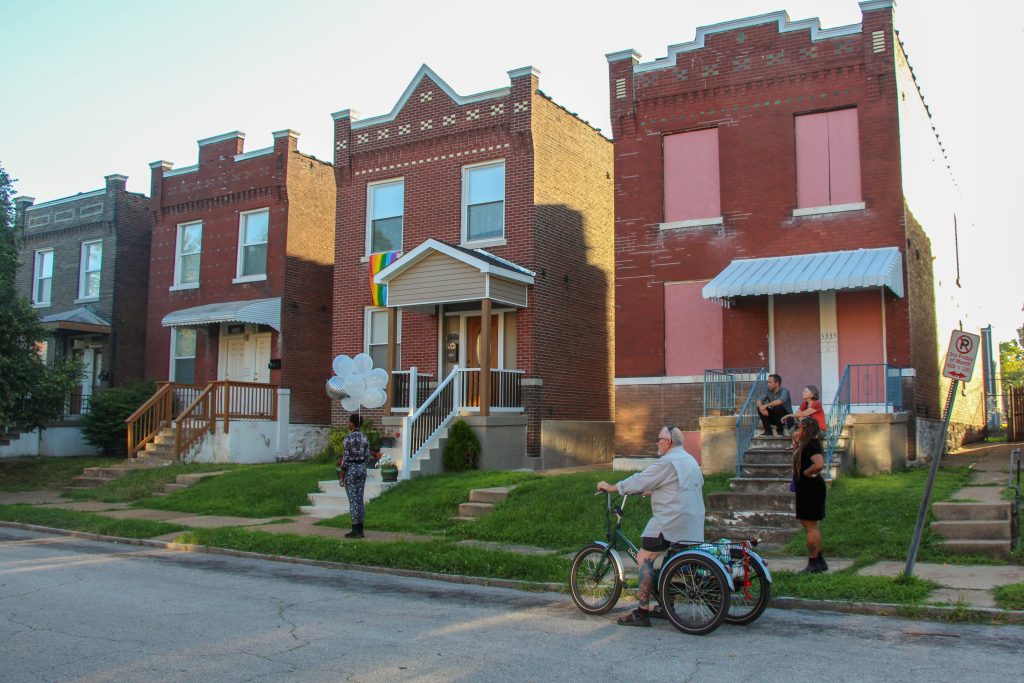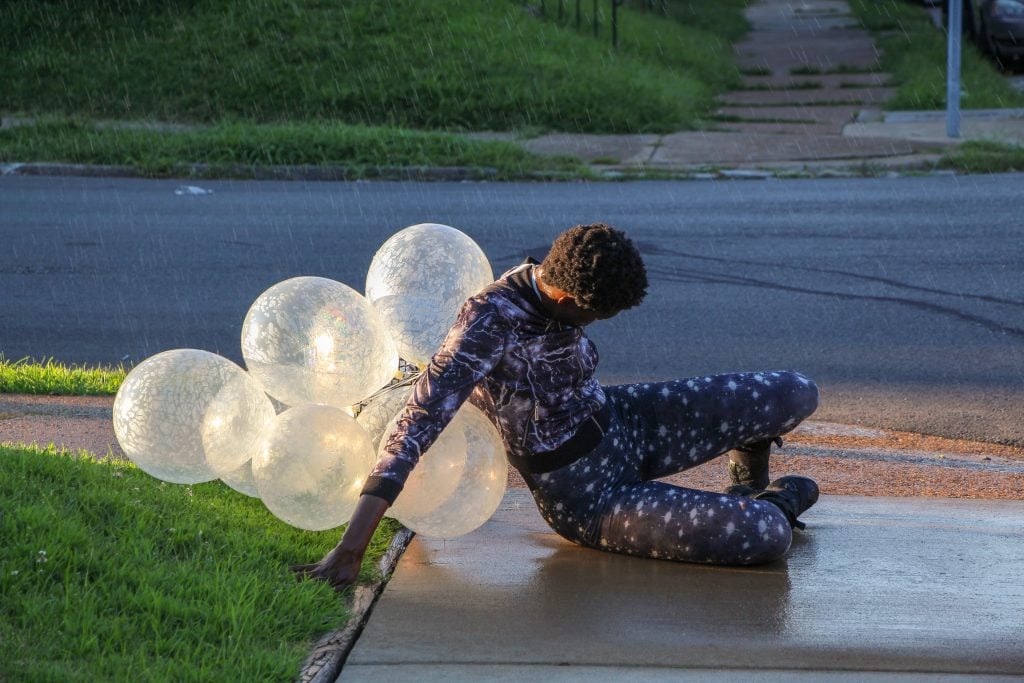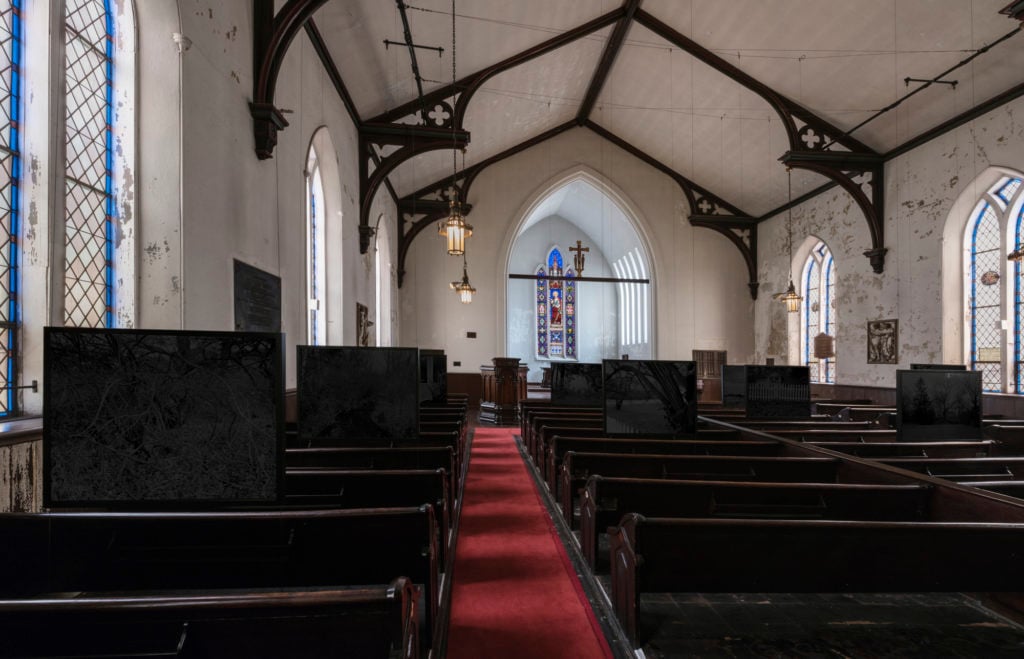Op-Ed
The Art World Is Reckoning With Calls for Social Justice. Could Biennials Show Us How to Change With the Times?
The director of Counterpublic in St. Louis on how cyclical exhibitions can teach us about the art of reinvention.

The director of Counterpublic in St. Louis on how cyclical exhibitions can teach us about the art of reinvention.

James McAnally

The founding purpose of so many contemporary cyclical exhibitions, from Documenta in 1955 to Prospect in 2008, is to rehabilitate and rebuild the reputation of a city or nation after crisis. While less acute than post-World War II Kassel or post-Katrina New Orleans, the past year has led to a reckoning in the world, and in art, that requires a widespread imagining of other ways forward. What should the biennial or triennial of the future look like? Its cyclical nature may offer our best chance for remaking art and its institutions as an ongoing process of repair and reimagining, one that changes with its time and refuses the stagnation of expectations.
Unlike many existing institutions struggling with how to change to meet the demands of their time, triennials are necessarily meant to be remade every iteration. This instability, which has sometimes given tacit permission for risky or outright bad behavior—such as the common practice of artists taking out massive loans to fund participation in the Venice Biennale, or a threatened lawsuit against Open Spaces in Kansas City for allegedly failing to pay artists—should instead be taken as an opportunity to remain accountable to changing needs and dynamics. As these exhibitions emerge every few years, they should ask: What is needed now, and what is needed next?
As the executive and artistic director of Counterpublic, a cyclical civic exhibition founded in St. Louis in 2019, my team and I are entering this moment of change by viewing the exhibition as a chance to test the boundaries of the form. Counterpublic was founded with a vision that the seeds of the future are already here within the activist, abolitionist, life-affirming work that has permeated St. Louis not just through the pandemic, but the numerous examples of art-making, collective organizing, and daily acts of resistance that have defined the city’s recent history.
We are forming the next edition, taking place in 2023, through a communal effort of storytelling, documentation, archiving, and envisioning that will guide the eventual artist commissions. We are starting with the community and letting them lead, waiting to propose commissions until we are invited in to create responsive, sensitive, and speculative works situated in place.

NIC Kay, pushit! [an exercise in getting well soon] in a closing performance for Counterpublic 2019. Photo: Melissa Fandos.
Outside the churn of the contemporary art world, with exhibition calendars stacked year on year, could the slow build and release of the triennial offer a more humane pace? One that allows proper engagement, inquiry, and reorientation to one’s place and publics? Though the triennial only runs for three months every three years, the model allows for thinking both infrastructurally and ancestrally to leverage change beyond its dates. We are considering both what we are inheriting—harm and hopes alike—and what we will leave behind.
To guide this work, we are doing power mapping—documenting where and by whom power is held in the community, and where and from whom it has been systemically taken away. We are building responsive community benefit agreements for partners, contractors, and stakeholders to ensure that our work builds communal investment where it is needed most. Rather than bringing art to established cultural districts and developer-ready spaces, we are working in predominantly under-funded areas, attempting to build sustainable, community-held assets at sites such as the Griot Museum of Black History, the George B. Vashon Museum, and numerous schools, community gardens, and historic houses. Our goal is an art world that can better serve the world around it.
Likewise, in a field where leadership remains startlingly white, and often out of sync with the populations it claims to serve, triennials should lead in equity work. As civic institutions, they should be built in relation to who lives and works there. Alongside like-minded peers in this work, including the Toronto Biennial and FRONT International, we are foregrounding equity both in both our public programs and our staffing decisions. Counterpublic has committed that our staff and artist list reflect our city’s demographics. In the 2019 edition, this meant that participants were 75 percent Black, Indigenous, or artists of color, and our first five hires for the 2023 edition have likewise been local artists of color, working in everything from documentation to curation to design.

Dawoud Bey, Night Coming Tenderly, Black, 2017. Installation view at St. John’s Episcopal Church. Commissioned by FRONT International: Cleveland Triennial for Contemporary Art. Photography © Field Studio.
Expanding on the staff curatorial team of myself and Katherine Simóne Reynolds, for 2023 we have gathered a five-member curatorial ensemble including Allison Glenn, Diya Vij, Dream the Combine, New Red Order, and Risa Puleo. Eschewing the colonial model of the singular curator to sum up the state of a city, the ensemble is meant to unsettle the form, sending viewers in divergent but overlapping directions. This multiplicity is not only essential to our project, but is also true to any institution: our cities, audiences, and experiences are always multiple and often contradictory. There is no general public. Counterpublic was founded in part to expand the publics of public art, bringing art into direct exchange with the everyday life of our neighborhoods and prioritizing encounters for those who might never step foot in a gallery or museum.
In 2019, this meant situating art in tea shops and punk clubs, muffler shops, vacant lots and a Buddhist temple—a strategy we will expand upon in 2023 with a wider lens and with more entry points. Following six months of research and groundwork, we will start opening parts of the program incrementally with digital commissions, text-based works, conversations, and more, arriving slowly to its full form. Going forward, triennials—and the art world at large—must advocate for creative work that arrives to its audiences everywhere they are, in whatever form or medium is required.
Triennials may also be a testing ground for new forms: hybrid physical-digital presentations; use of publications, newsletters, podcasts, jump drives, yard signs, skywriting, collective syllabi, and other distribution methods; elevation of mutual aid networks, abolitionist organizing, direct care practices, slowed-down timelines, and a renewed primacy of private encounters with art. These are all the seeds of other worlds less reliant on spectacle and institutional presentation that triennials have long perpetuated.
St. Louis occupies oppositions of historic proportions. We are represented simultaneously by Senator Josh Hawley and by Representative Cori Bush, two polar opposites on the political spectrum. We have elected one of the nation’s most impactful leaders, Tishaura Jones, as mayor, while the McCloskeys, who famously brandished guns at passing protesters last summer, represent the region at the Republican National Convention and run for Senate. As one of the most historically charged and symbolically potent places in America, the issues of St. Louis are the issues of the nation. We are tied and allied to its civic faultlines and futures.
I have used the word “triennial” throughout this piece—there is no prevailing term for these cyclical exhibitions. Though Counterpublic opens on a three-year cycle, we decided to shed the term triennial in favor of being a “civic exhibition.” The word “triennial” carries the baggage of exclusionary, often extractive events, but more importantly it fails to speak to intent, focusing on how often the exhibition happens, rather than why. Who are we here for? What is the future we are prefiguring and fighting for? Which visions are we fighting against?
These are grounding questions for any institution. Beyond an exhibition, we are building a singular civic platform meant to reimagine how art engages the contexts, textures, and futures of St. Louis. Our hope is that it might provide a model for institutions, both in the art world and beyond, to better show up for and serve their communities.
James McAnally is the founder and executive and artistic director of Counterpublic. He is also the co-founder and executive director of The Luminary, an expansive platform for art, thought, and action based in St. Louis, Missouri, as well as the co-founder and editor of MARCH: a journal of art and strategy (formerly Temporary Art Review). He serves as a founding member and chairperson of Common Field, a national network of artist organizations and organizers.